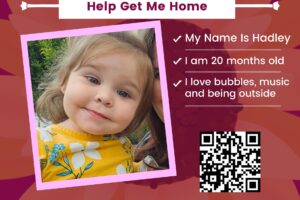Our region has had more than its share of bridge jumpers this summer. The Tappan Zee has always been a "popular" suicide spot due to the low guardrails and most-likely-fatal height, so much so that current construction includes higher guardrails.
Within the last few years, signs have been posted saying that life is worth living and giving a phone number to call for help. In addition, as we have all speculated over the cause of the fatal drunk-driving accident on the Taconic earlier this summer, some have commented that perhaps the driver was trying to kill herself and sadly took seven others with her.
Suicide is a fascinating and confusing matter for many of us because the instinct, in all creatures, is for survival. Darwin wrote about survival of the fittest, how nature made it so that all the species are maintained and evolve basically through the fight for survival of the strongest and healthiest. The instinct in most animals is to fight off danger, elude predators, eat and drink to survive and stay healthy, and stay away from dangerous poisons or toxins. But, for some people, that drive to live is overshadowed by depression and despair and, at that time, ending the pain through death seems the only option. It’s hard for most of us to imagine such despair, but suicidal thoughts, actions, and obsessions are not uncommon.
In 2006, suicide was the eleventh leading cause of death, accounting for over 33,000 deaths in the United States, which is about 11 suicide deaths per 100,000 people. In addition to the 33,000 deaths, it is estimated that there are at least 12 to 25 suicide attempts that are not successful. More than 90 percent of those who die by suicide have depression or another mental disorder, and/or a substance abuse disorder. A family history of mental illness, suicide, or substance abuse is also a risk factor. American Indian and Alaskan natives are most likely to commit suicide, with Asian and Pacific Islanders the least likely. Almost four times as many men as women die by suicide, although more women make suicide attempts. It is generally accepted that the reason for this is that men choose more lethal means, such as using firearms, whereas women tend to take pills, which not only may not work, since often the person will get sick and vomit up most of the pills or poison, but also gives the individual time to change her mind. It is not unusual to have people call 911 or turn up in an emergency room reporting that they had taken an overdose a little while earlier. The same is not true of putting a gun in your mouth. If you pull the trigger and destroy your brainstem there are no second thoughts.
It is important to state here that unsuccessful suicide attempts are cries for help, not harmless attention-seeking behaviors. If someone makes a suicide attempt, he is in extreme pain and should not be left alone, but should be supported, treated by medical professionals, and monitored until he stabilizes.
Suicide rates vary in ways that may surprise some people. Young children, not surprisingly, are very unlikely to die by suicide, and those of us who work with children take any type of suicidal thinking in children under ten or so very, very, very seriously as it is so unusual. For adolescents, that level of depression is not as uncommon, but they can often be kept safe with the right kind of treatment, having them agree to sign a "contract" that they will not hurt themselves until their next appointment, or having family and friends band together to protect the individual. The suicide rate goes up as people hit young adulthood, with the rate being about 12.5 deaths per 100,000 individuals aged 20-24.
While those statistics may not be a surprise, this one may be: of every 100,000 people aged 65 and older, a whopping 14 died by suicide in 2006, higher than the national average for all ages. White males over the age of 85 have an even higher rate, with 40 suicide deaths per 100,000 people. I am not sure if it is still the case, as our society has become more accepting and tolerant of differences in lifestyle, but at one time the group who had suicide rates similar to the statistics for the elderly were teenagers who either had come out as homosexual or were questioning their sexual orientation.
Why would these two groups have such high rates of suicide? For the elderly, it is a high rate of depression that probably sparks the high rates of suicide. Depression is very common among the elderly as spouses, friends, and family start to die and people feel lonely. The days of staying in one small community and having multiple generations living either together or near each other are over, and many senior citizens feel isolated. Senior housing and Viagra have helped with the social lives of some healthier seniors, but those that are dealing with failing health and chronic pain can become very depressed and hopeless and see suicide as the only option. And it need not be one simple act of violence to be suicide; some elders simply stop taking medication or take it the wrong way and end up sort of "passively" committing suicide. What appear to be car accidents or falls may actually be suicide attempts. I will never forget, as a young adolescent, watching my grandfather, once a burly contractor with arms the size of some people’s thighs and a laugh that filled a room, refuse medical care, leave his medications untouched, and die a slow death after my grandmother succumbed to a heart attack only eighteen months before. My aunt always said he died of a broken heart. Even at 12 years old, I knew he had passively killed himself.
For gay and questioning teenagers, historically, issues such as lack of acceptance and search for identity that complicated the already tumultuous teen years, have caused a high suicide rate among this group. It is hard enough to be a teenager, to feel uncomfortable in your own skin, to have so many questions about what you want to be, what you want to do, where you fit in. Add to this the realization that your sexual orientation, or even your very gender identity may not be "mainstream," and suddenly there can seem no solution, no end to the angst and isolation. At this point, suicide may seem the only way out of a very painful situation.
Certain programs and treatments have been shown to be helpful in preventing suicide.
Particular drugs have been shown to be helpful in decreasing suicidal behavior in those with schizophrenia. Better awareness among primary care physicians can help to guide patients into proper treatment if they are showing signs of depression and suicidality. One area under investigation is improved outreach to men who tend to not only use the most lethal means, but are also less likely than women to seek treatment in the first place if feeling depressed. If, for any reason, you think someone you know is suicidal, do not leave that person alone. If he can’t guarantee his own safety, he should be brought to an emergency room. If she already has a therapist, calling the therapist and setting up an emergency appointment might be helpful in getting needed help in place. The county has a mobile crisis team that can be called and will come out to any place and assess the situation. Obviously, if a person is suicidal, it is imperative to make sure that there are no firearms available, and that he does not have unlimited access to medications that can be lethal (don’t forget, as few as eight Tylenols can be lethal.) For some, preventing suicide is a long, arduous process with many fits and starts along the way due to the intractable nature of some forms of depression. For others, simply helping the person through the crisis is enough to ensure safety and allow the person to get the help she needs.
Barbara Kapetanakes, PsyD., practices child, adult, and family psychotherapy in Sleepy Hollow.







